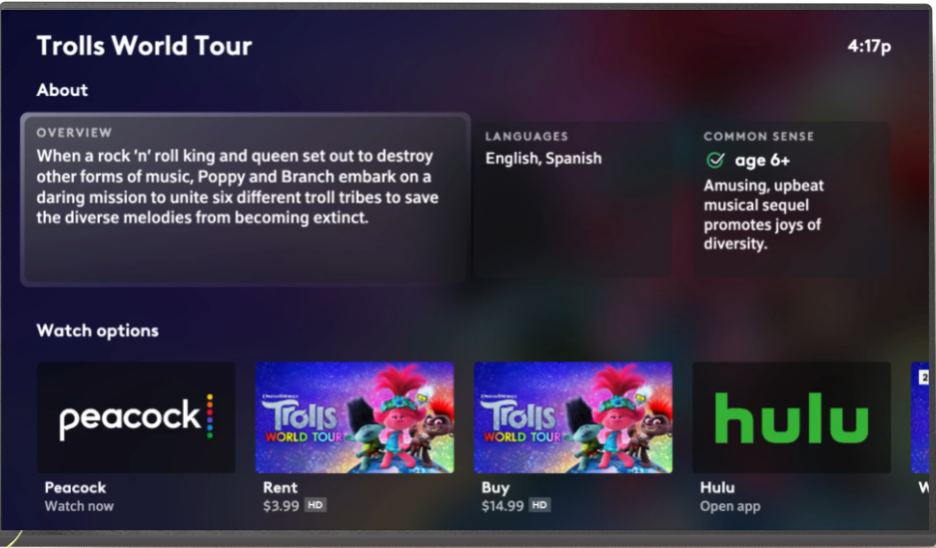The Tech Behind Comcast’s Accessibility Efforts
Integrating accessibility throughout the tech stack for Comcast Cable’s entertainment platform improves the user experience for everyone, explained Comcast Cable’s Tom Wlodkowski

PHILADELPHIA, Pa.—In a new blog post, Comcast vice president of accessibility Tom Wlodkowski has laid out the company’s approach to building more accessible products and described how integrating accessibility throughout the tech stack has improved the user experience for everyone.
“When you make a product more inclusive you create a better experience for everyone,” writes Wlodkowski, who has been blind since birth and has been leading accessibility at the company for many years.
He noted that as the company develops its next-gen entertainment platform, Comcast has transitioned to development on a web-based platform running an open-source JavaScript framework called LightningJS. This framework, which delivers enhanced video experience, innovation and speed to market, also helped embed accessibility into their entertainment products from the beginning.
Comcast Cable, he writes, has for many years built entertainment products like X1 and Flex with accessibility top of mind. But until the last few years, traditional tech approaches in the cable industry meant that they had to retrofit solutions onto existing platforms after the fact.
Today, however, “we’re excited to be able to outfit our global technology platform itself to power new and existing accessible experiences,” he wrote. “For the past two years, we have been transitioning our entertainment products to a web-based platform running an open-source JavaScript framework called LightningJS. In addition to delivering significant benefits in terms of video experience, innovation, and speed-to-market, it has given us the opportunity to embed accessibility into the platform architecture from the beginning.”
“Similar to our approach with cybersecurity, our goal is to ensure we are building accessible design into our products from the get-go, not as an afterthought,” he wrote. “LightningJS is a key part of that effort.”
In the blog post he provided a few notable examples how the new, much more flexible approach has helped improve accessibility:
Get the TV Tech Newsletter
The professional video industry's #1 source for news, trends and product and tech information. Sign up below.
- “The scale of type across all our entertainment products has been increased and can be easily adjusted to improve readability of on-screen menus, program guides, etc.”
- “We defined a high contrast color theme that can easily be applied to all the components within an application with a single setting change, making our entertainment content easier to read and navigate for everyone.”
- “We are designing and developing the experience with motion in mind. Through reduced motion mode, we can more easily scale back the amount of animation on screen, creating better viewing experiences for those with motion sensitivities, while maintaining the default experience.”
- “Focus state, the ability to highlight interactive components for accessible navigation is important for customers with limited mobility that are using a screen reader or other accessible technology. We’ve been able to take the focus state to the next level by using a larger scale, increasing the color contrast between the background color and art, and adding subtle animation to draw attention to the focus state. We plan to enhance this even further in future releases.”
“With this new design thinking and the new Lightning development framework – we took the opportunity to build out a shared component library of Lightning UI components,” he added. “Accessible design and features are baked in and help us ensure that detail and dedication to accessibility are standardized across all applications these components are used on. That means that wherever they are in our company, NBCUniversal, Sky, or Xfinity, developers will be able to adopt and use all the innovative accessibility features created by their colleagues across the globe.”
“It really is true when they say, `when you make a product more inclusive, you make a better product,’ and I feel lucky to be part of bringing that to life,” he concluded.
The full post can be found here.
George Winslow is the senior content producer for TV Tech. He has written about the television, media and technology industries for nearly 30 years for such publications as Broadcasting & Cable, Multichannel News and TV Tech. Over the years, he has edited a number of magazines, including Multichannel News International and World Screen, and moderated panels at such major industry events as NAB and MIP TV. He has published two books and dozens of encyclopedia articles on such subjects as the media, New York City history and economics.

